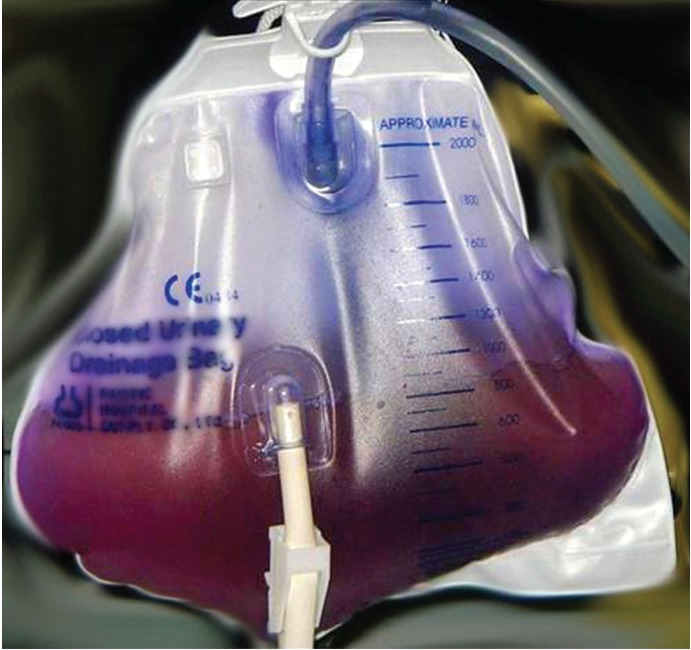Purple urine bag syndrome in a patient with a urethral balloon catheter and a history of ileal conduit urinary diversion
Article information
72-year-old female bladder cancer patient presented with a history of ileal conduit urinary diversion; a urethral balloon catheter was inserted to control her urinary tract stoma. The patient, who reported a foul odor emanating from her urine for several days, visited our hospital as an outpatient when her urine bag developed a purple hue, although there was no change to the color of her urine. The patient's body temperature was 36.8℃, her blood pressure was 124/68 mmHg, pulse rate was 74 beats per minute (regular), and respiratory rate was 18 breaths per minute. Urinalysis revealed white blood cells, urine nitrite, and gram-negative rod bacilli in her urine. Although voided urine color was normal, urine in the bag had developed a purple hue; therefore, purple urine bag syndrome was diagnosed due to a urinary tract infection (Fig. 1). Urine color improved after treatment with oral cefaclor. Escherichia coli was also detected in the urine culture.
Purple urine bag syndrome, a clinical condition during which the bag develops a purple hue, is triggered by constipation or urinary tract infection during urethral catheter use and can occur even after urinary diversion. Tryptophan (an essential amino acid) is absorbed from the intestinal tract following degradation by intestinal bacteria, and is then excreted in the urine after being conjugated with sulfate in the liver. Tryptophan is also modified by the sulfatases or phosphatases produced by urine bacteria, resulting in an indigo (blue) or indirubin (red) hue. Tryptophan produces an indigo, purple, or red color according to the specific ratio of each pigment. Because these pigments are insoluble, urine bag coloration occurs when they adhere to the inside of the bag.
Notes
Conflict of interest: No potential conflict of interest relevant to this article was reported.
